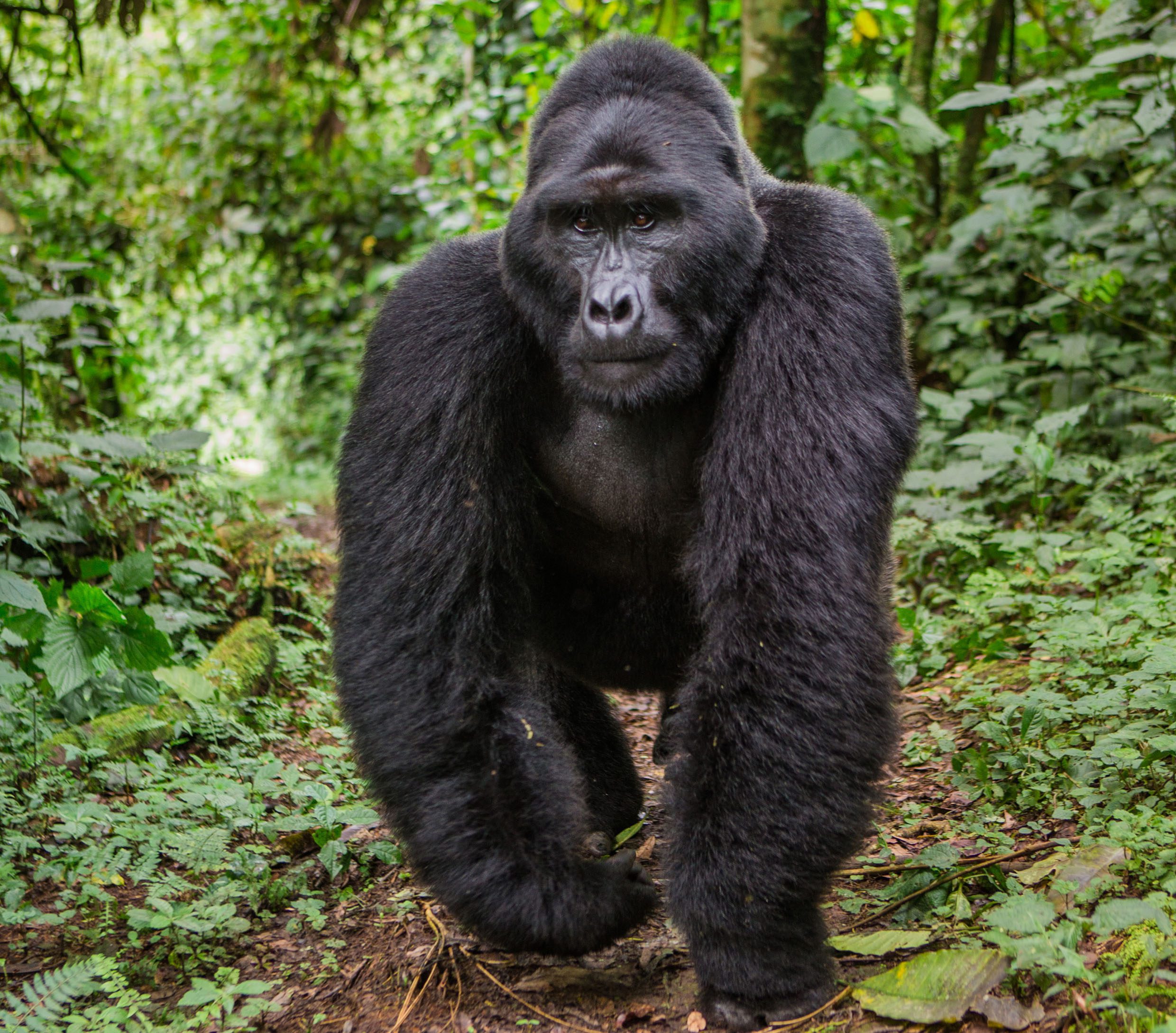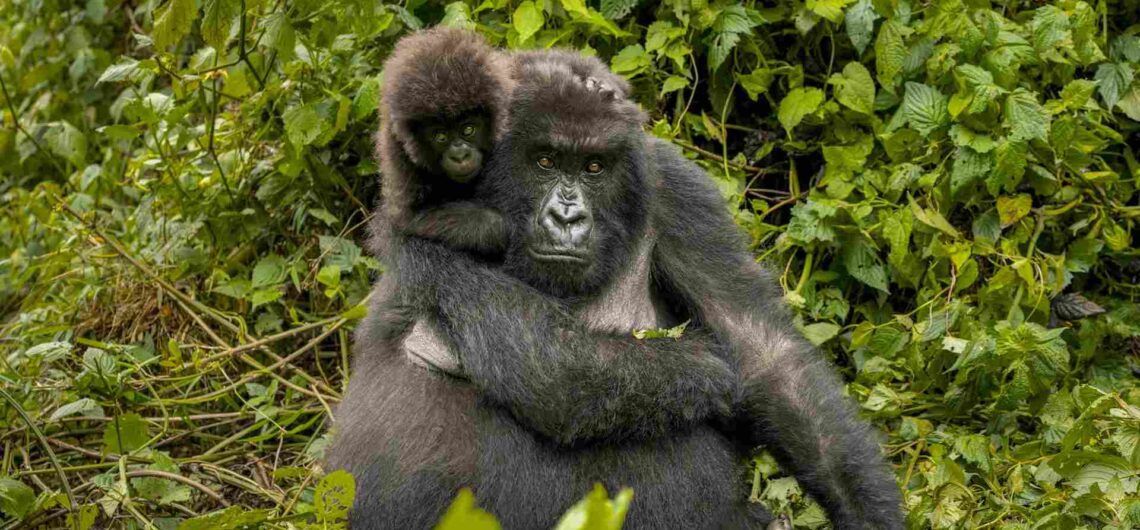Characteristics of Mountain Gorillas
Physical Characteristics of Mountain Gorillas: Compared to all the other gorilla species in Africa, mountain gorillas are distinguished by having thicker fur. This enables them to survive in higher, colder elevations. Because of the silver hair on their backs, adult male mountain gorillas are known as silverbacks. A silverback gorilla can weigh up to 195 kilograms, compared to an adult female gorilla’s weight of roughly 100 kilograms. In addition, silverbacks are four times stronger and taller than the largest human. However, compared to eastern lowland gorillas, mountain gorillas often weigh less and are smaller.
The 267-kilogram heaviest lowland gorilla ever captured was killed in Cameroon. Mountain gorillas, like all other gorilla species, can be recognized by the distinctive nose prints of each individual. Their hands are longer than their legs, and they have dark brown eyes. Although gorillas are capable of standing and walking upright, they prefer to knuckle walk, using their fingers to support their weight. There is no nighttime activity for gorillas (6:00 am to 6:00 pm). To maintain their great size, they spend the majority of this time eating insects, shoots/stems, leaves, roots, flowers, and fruits.



Comments